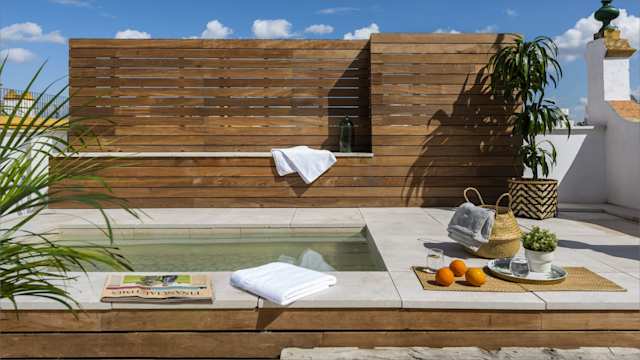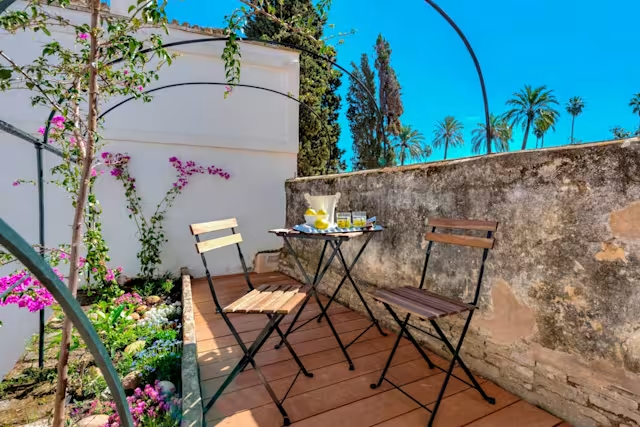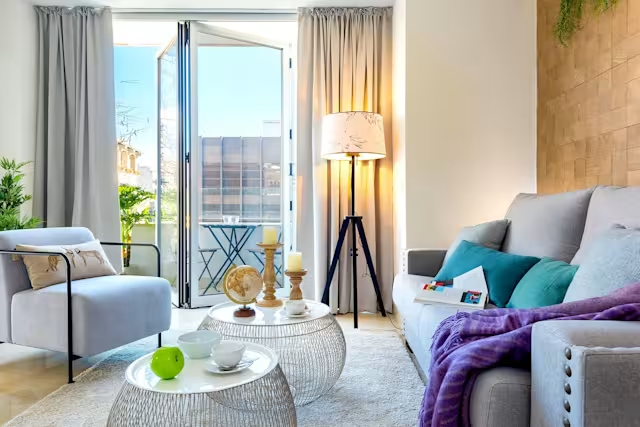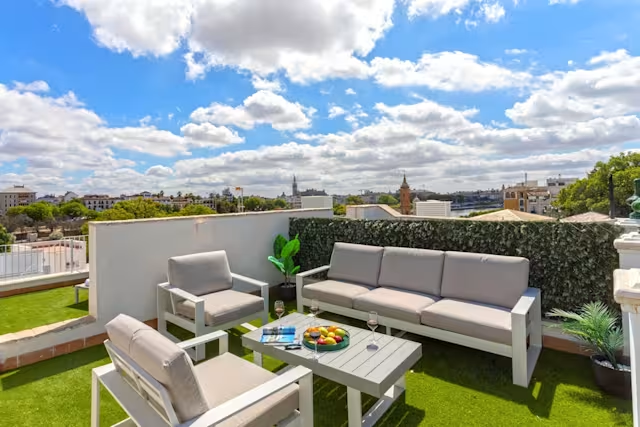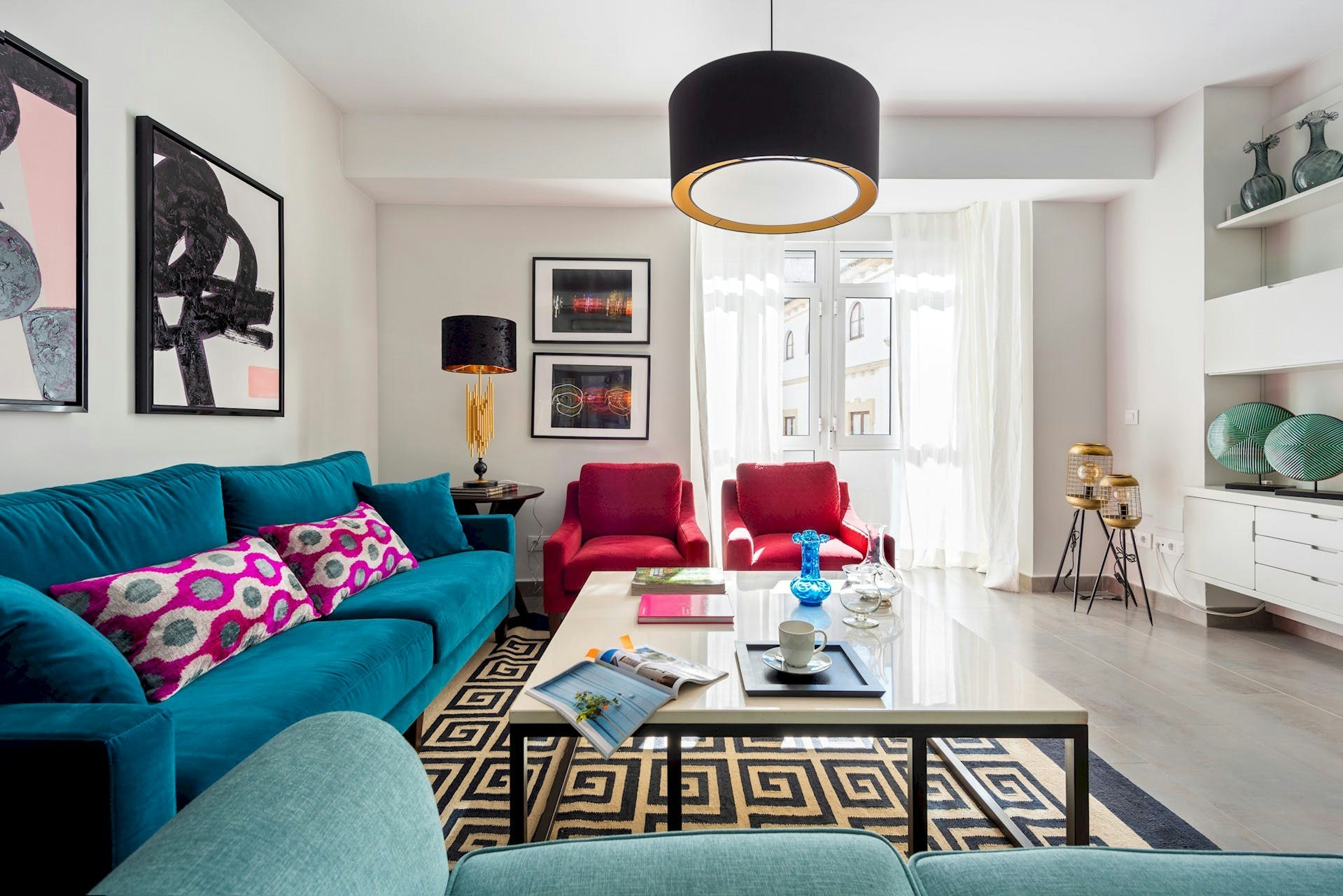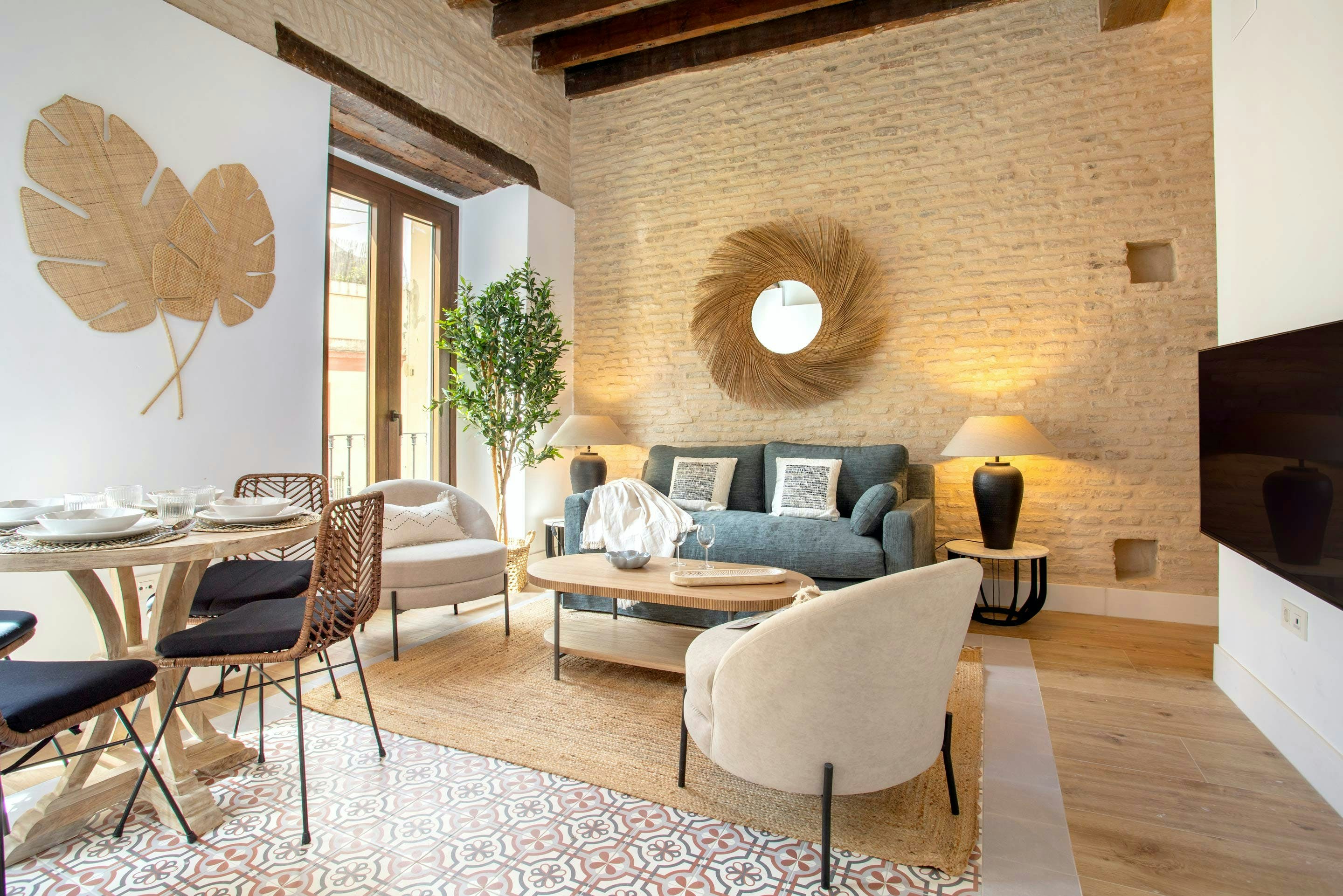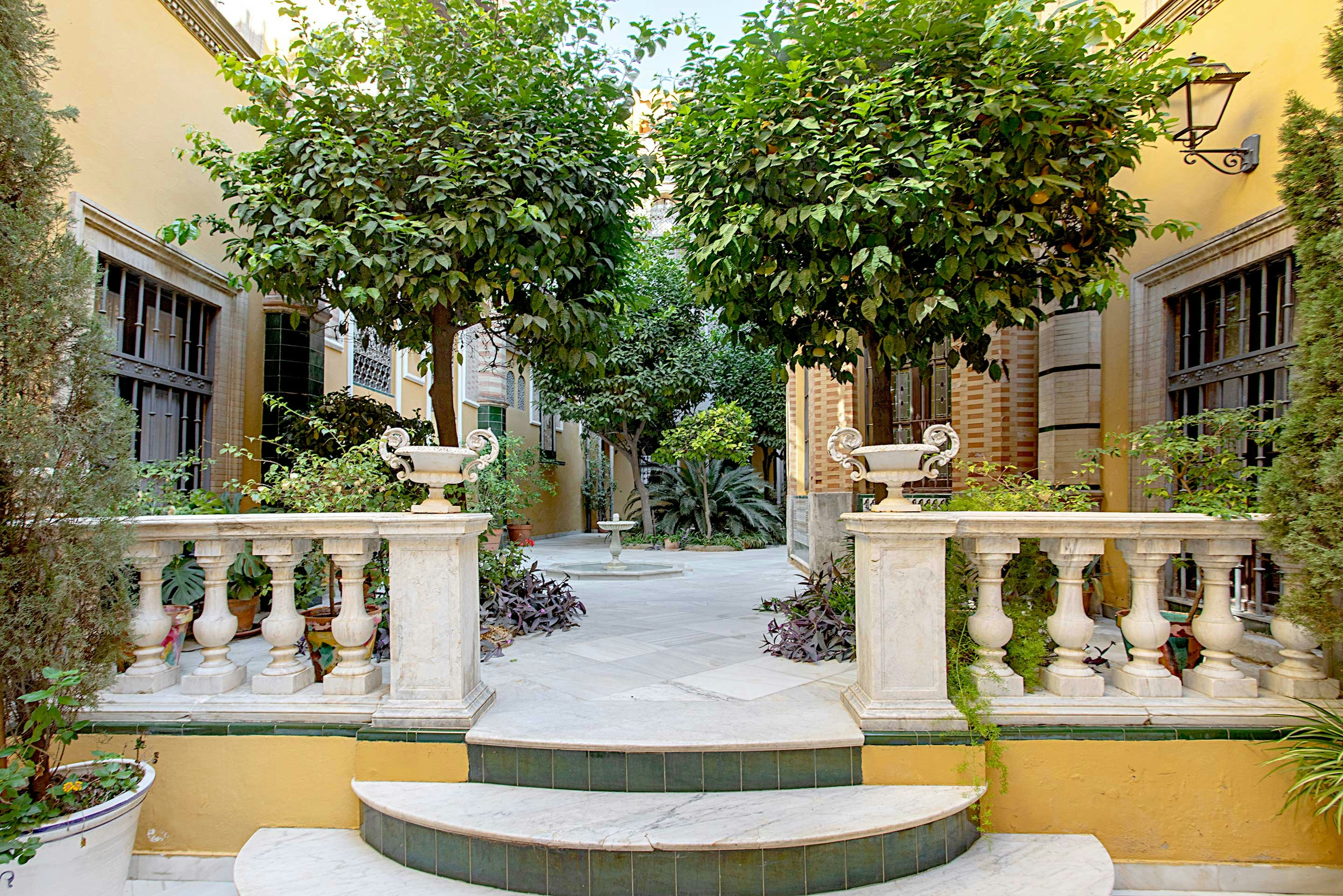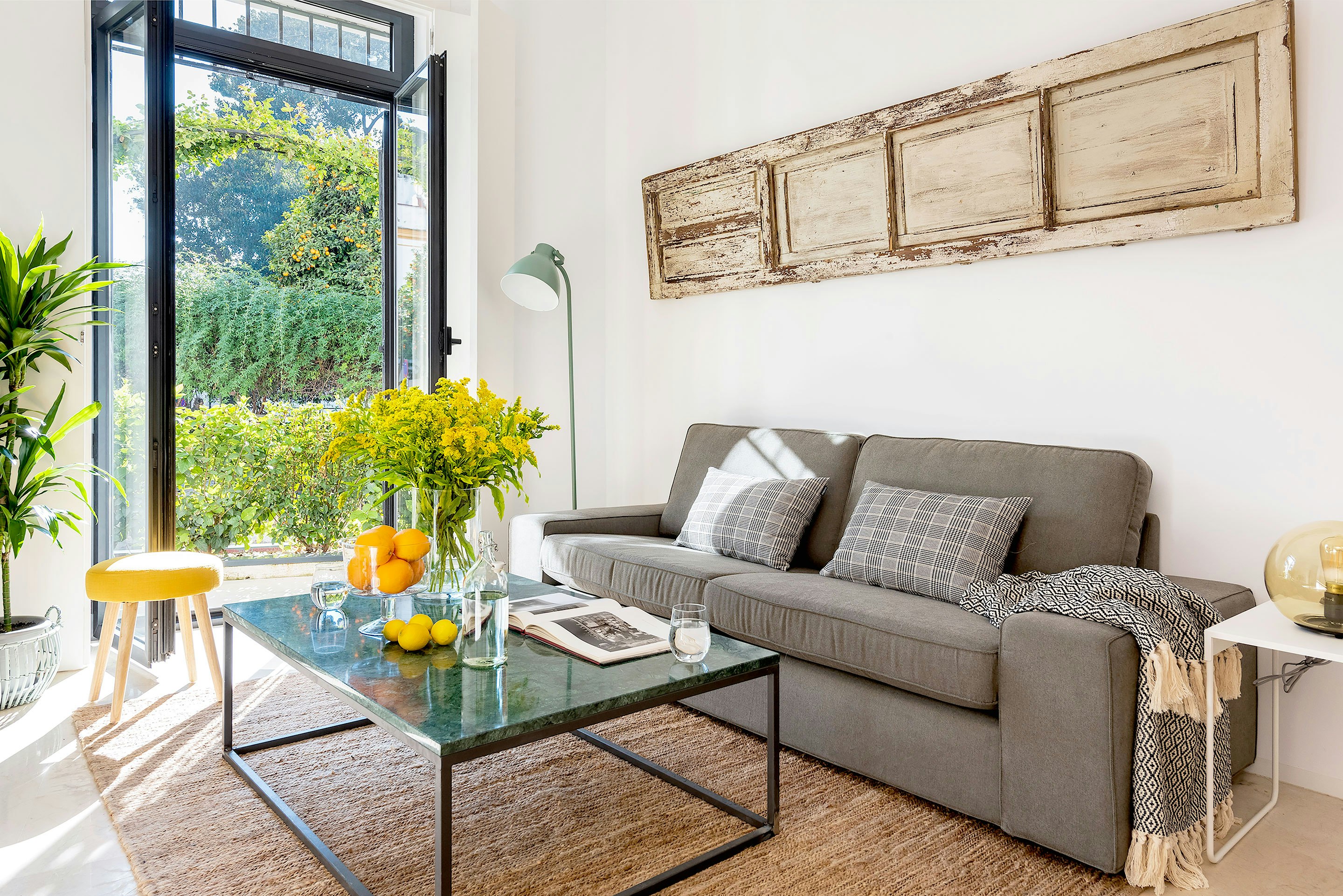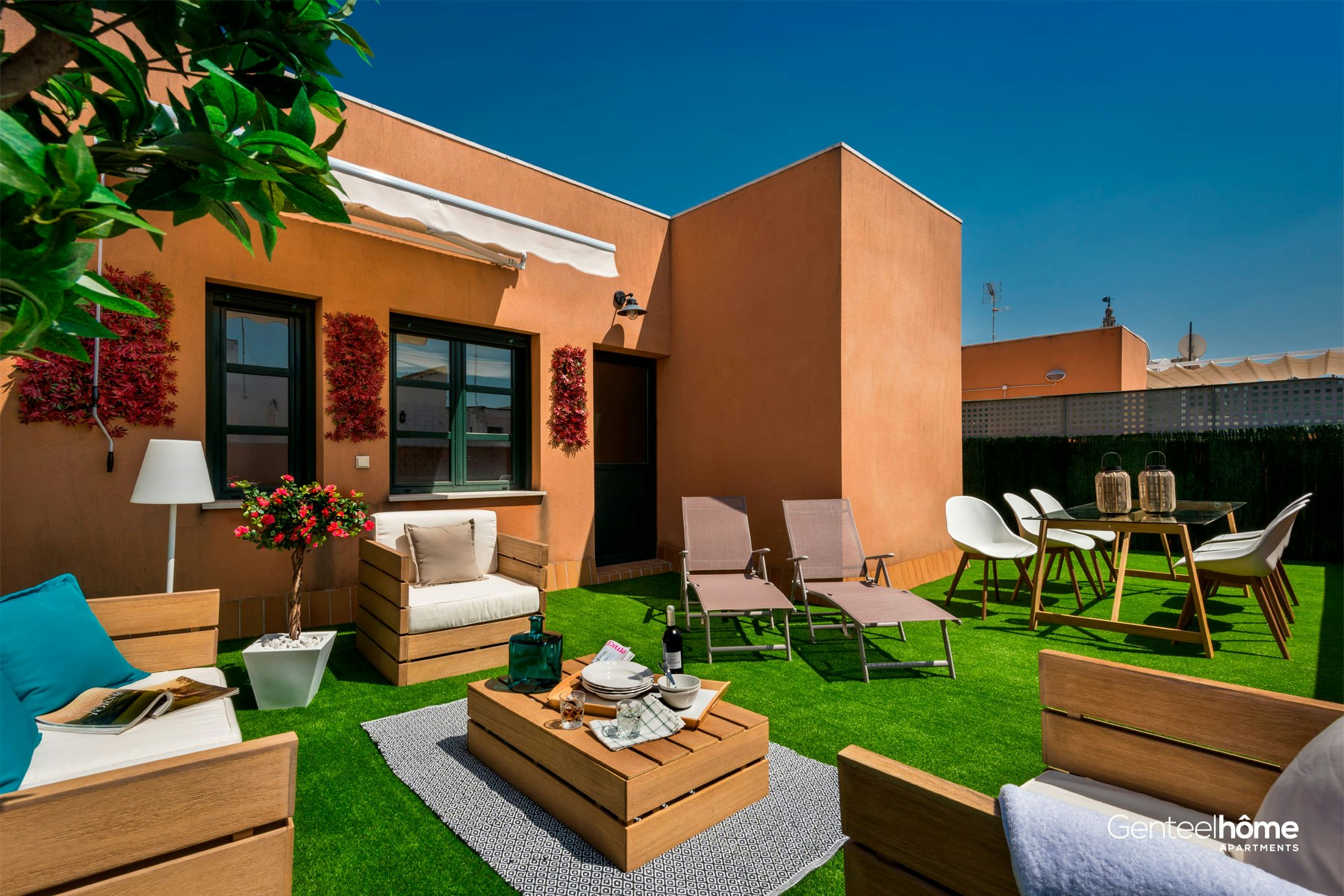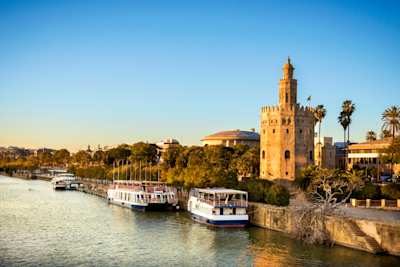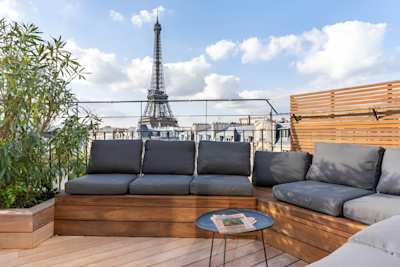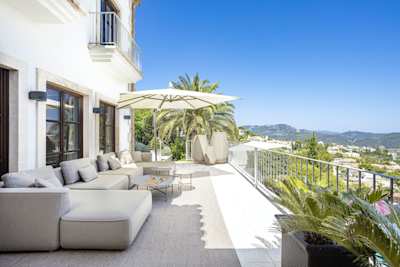Flamenco, Tapas and Architecture: A 3 Day Seville Itinerary
For three days, eat and dance your way through one of Spain’s greatest cities
~
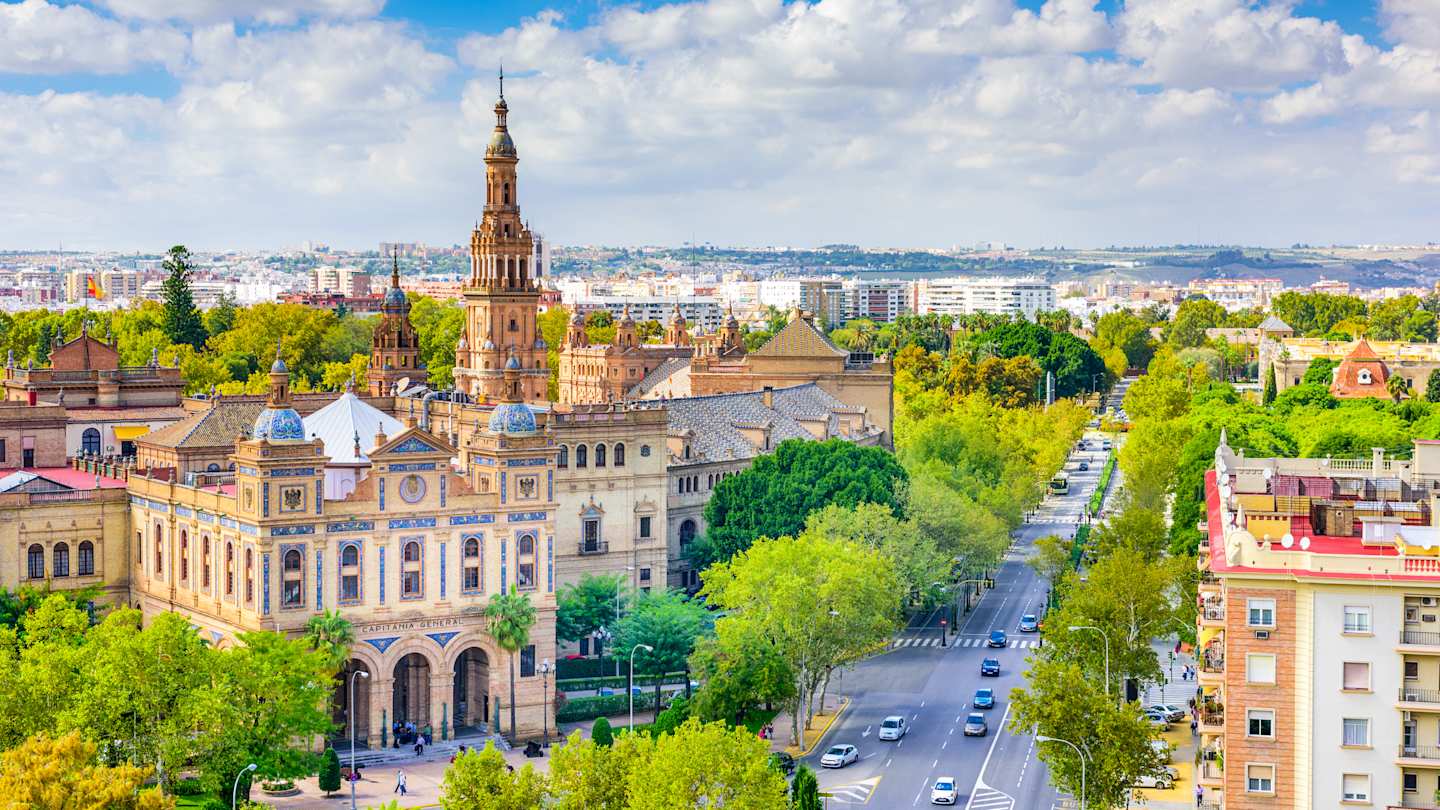
So, you’ve made the decision that your next city break should be Seville (or if you haven’t yet, you really should). It’s a smart move. With beautiful architecture, centuries of history, passionate flamenco and delicious tapas, Seville really is one of the best cities in Spain, no doubt about it. But with so much to do and see, how do you decide and organise? With the help of Plum Guide experts, of course. To save you the hassle and stress, we’ve put together this Seville itinerary for three fun-filled days across the city. Now, all you have to do is focus on what to pack.
Day 1: Discover the sights of Seville – visit Seville Cathedral, explore Royal Alcázar, and try Andalusian tapas.
Day 2: Immerse yourself in the city's culture – wander Plaza de España, browse the museums in Plaza del Museo, and watch a flamenco show.
Day 3: End your trip with an Andalusian activity – sample wine on a vineyard tour, get moving with flamenco dance classes, or take a boat cruise down the river.
Day One: Discover the sights of Seville
Morning: Stroll around Barrio Santa Cruz

A view of the tower of a cathedral behind oranges growing on trees, Seville, Spain
We recommend starting your first day in Seville with a charming stroll around Barrio Santa Cruz, which was once Seville’s Jewish quarter during the medieval period. This neighbourhood is home to both the Seville Cathedral and Alcázar, and is a popular tourist destination thanks to its beauty and cultural significance. Explore the many narrow streets and alleys, admiring the whitewashed houses, flower-filled balconies and traditional patios along the way. Don’t miss the Plaza de Santa Cruz which has a beautiful fountain surrounded by orange trees (camera at the ready). If you work up a thirst or appetite, you’ll find plenty of local cafes around here to grab a refreshing drink and light lunch.
Afternoon: Visit the city's iconic landmarks
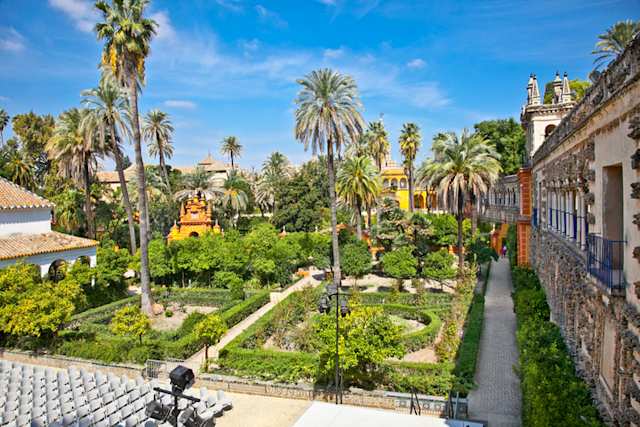
Moorish gardens with palm trees in the Real Alcázar, Seville
When you’re ready, head over to the Seville Cathedral, the largest Gothic cathedral in the world and a magnificent example of this type of architecture. Admire the high vaulted ceilings, intricate stained glass windows and ornate decorations galore. Keep your eyes out for the Giralda Tower which was originally built as a mosque minaret – you can even climb up it for inspiring views of the city. Fun fact: the cathedral is home to the tomb of Christopher Columbus, located near the main altar.
Next, explore the Alcázar, a palace complex originally built by the Moors in the 14th-century and expanded and renovated by various monarchs and rulers ever since. This architectural masterpiece boasts a mix of Islamic, Gothic, Renaissance and Baroque styles set amongst breathtakingly beautiful tilework, arches, courtyards, gardens and water features. TV geeks may recognise the palace and its accompanying gardens from HBO’s hit series Game of Thrones, where it was used to film a number of episodes as the Water Palace of Dorne. Thankfully, not many gruesome executions actually take place here.
Evening: Embark on a tapas bar crawl
There’s no better way to end your day with a tapas bar crawl. The city is home to some of the very best tapas in Spain, and you simply cannot come to Seville without eating at least an evening’s worth. Tapas are small plates of different dishes designed to be shared in a social setting. For something light, salmorejo is a traditional tomato soup made with bread, olive oil and garlic – it’s a thicker and creamier version of gazpacho. Fried finger food is always a crowd-favourite, so be sure to order croquetas de puchero, which are croquettes made from beef, pork, cured sausages and pork fat. Albóndigas de choco is another popular dish of tender meatballs made with squid or cuttlefish. Heartier dishes include carrillada, which can be made using beef cheeks or Iberian pork cheeks which are then braised in red wine or port; and rabo de toro, a melt-in-your-mouth stew which, despite its name, is more commonly made with oxtail than bulltail. Some of the best tapas bars in Seville include La Brunilda Tapas, La Linterna Ciega, La Malvaloca, La Sede, and Bar Catedral Sevilla. Wander around and fall into the next tapas bar, enjoying good food with good people.
Day Two: Immerse yourself in the city's culture
Morning: Explore Plaza de España
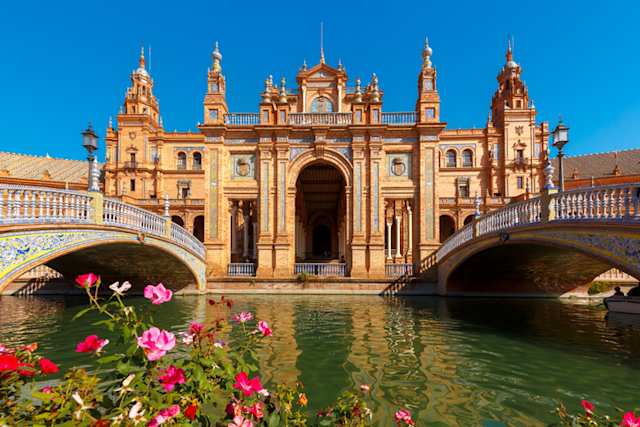
Plaza de España on a sunny day, with flower beds, bridges and water in the foreground, Seville
It’s day two of your Seville itinerary for three days, and hopefully you’re feeling fresh enough (damn that Spanish wine) to start your day by visiting the iconic Plaza de España. This stunning plaza features a unique blend of Renaissance and Moorish architecture and was originally constructed to host the Ibero-American exposition of 1929. Admire its intricate tilework, arches and fountains as you soak in the fresh air and lively, festive atmosphere created by street performers and musicians. The glorious morning sunshine (there’s plenty of it in Seville) should make for some rather lovely holiday snaps. This large, semi-circular plaza is situated within the beautiful Parque de María Luisa, which is well worth exploring on its own merits.
Afternoon: Browse the Museo de Bellas Artes de Sevilla
Whenever you’re ready, you can seek out a spot for late lunch. Keeping with the morning’s theme, nearby award-winning Sobretablas Restaurante can be found inside a 1920s-style building originally constructed for that Ibero-American Exposition. Chef Camila Ferraro is well known for her devotion to seasonality and respect for local ingredients – book in advance to avoid any disappointment.
Next, make your way to the Museum of Fine Arts (Museo de Bellas Artes de Sevilla), located in the Plaza del Museo. This museum boasts a tremendous collection of Spanish art, particularly Sevillan art from the medieval period to the 20th-century. Take a tour or wander around solo to view the works of many of Seville’s most famous artists, including Diego Velázquez, Francisco de Zurbarán and Bartolomé Esteban Murillo. The building itself is also stunning and a must-visit for anyone interested in art and culture.
Evening: Take in a traditional flamenco show
Finally, end your day with a flamenco show, a traditional dance form originating in the province of Andalusia between the 9th and 14th-centuries. Head to one of the popular venues such as Tablao El Arenal, Casa de la Memoria, or El Patio Sevillano, which offer dinner and show packages for a complete cultural experience of flamenco dancing, music and food. This is one of those essential Sevillan experiences, something you simply cannot miss out on. And yes, there is more Spanish wine.
Day Three: End your trip with an Andalusian activity
Day three is all about honing in on your favourite aspects of Seville. We have a number of recommendations from which you can pick, mix and match. Don’t say we never spoil you.
Flamenco dance lessons
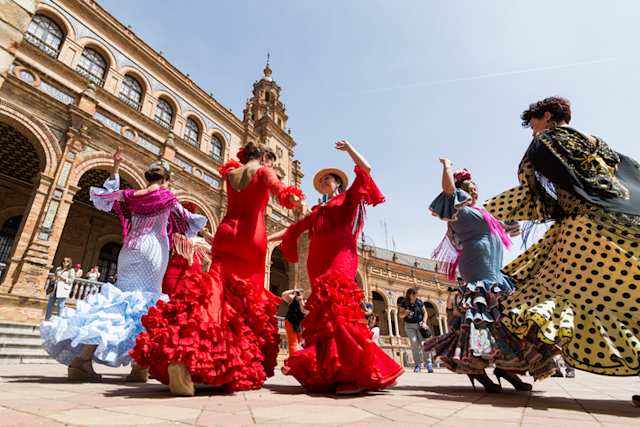
Young women in red, blue and yellow dresses dancing flamenco on Plaza de Espana, Seville
If you’re feeling rather inspired after the previous night’s entertainment (and who could blame you, flamenco is fantastic), why not try your hand (and feet) at it yourself? Seville is home to plenty of dance schools offering lessons and sessions to get your feet and hips flowing to that iconic flamenco rhythm. Even if you’re a beginner with no previous experience, you can find the right lesson and teacher for you.
The cultural centre at Casa de la Memoria not only hosts flamenco shows but also offers classes in dance, guitar, and singing. Their classes are taught by professional flamenco artists and are suitable for beginners as well as advanced students. Meanwhile, Centro de Baile Jerez is known for its experienced teachers and personalised approach to flamenco lessons. They offer both group and private classes for all levels.
Seville wine tour
Seville is home to three major wine-making areas, each with very different grapes and wines: the Aljarafe, the Sierra Norte and Guadalquivir-Doñana. Chances are that by the third day, you may have already tasted one or two of these delicious wines, so why not go right to the source and discover more about Seville’s winemaking traditions? We recommend heading over to the Aljarafe reason where you can find one of oldest running bodegas in the region. Vinícola del Aljarafe has its roots in one of the most renowned wineries in the town, Bodegas Ventura, belonging to the Castro family. Here, you can learn about their history and their unique wines.
Bike tour
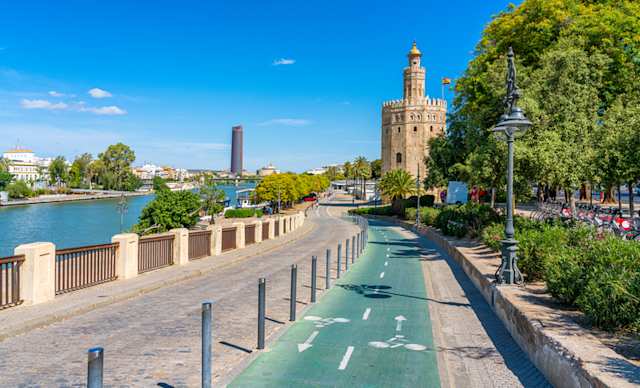
Scenic bike lane along the Guadalquivir river and facing the Torre del Oro, Seville
Seville is actually known as a very bike-friendly city, so what better way to explore it? After all, you have to burn off the tapas somehow. There’s an extensive network of bike paths and with all that flat terrain, it’s effortlessly easy and enjoyable to explore by bike. You’ll cover more ground and be able to see many more of the city’s landmarks, as well as potentially exploring neighbourhoods and corners that are off the beaten track. You could even jump on a tour with a local guide who can share insights about Seville’s history, architecture, and culture. This is a handy, healthy way to see some of the city’s hidden gems that you might’ve missed on your own.
River dinner cruise
No matter your day activities, to finish up your Seville itinerary for three days in the finest fashion, why not book yourself a cruise down the River Guadalquivir for dinner? The river played an important role in Seville’s history, serving as a major port for trade and exploration. Nowadays, it’s a great way to see the city from an alternative, slower and more relaxed perspective. At night, it’s particularly romantic and you’ll find there are a number of tour operators offering luxury yachts for the evening.
